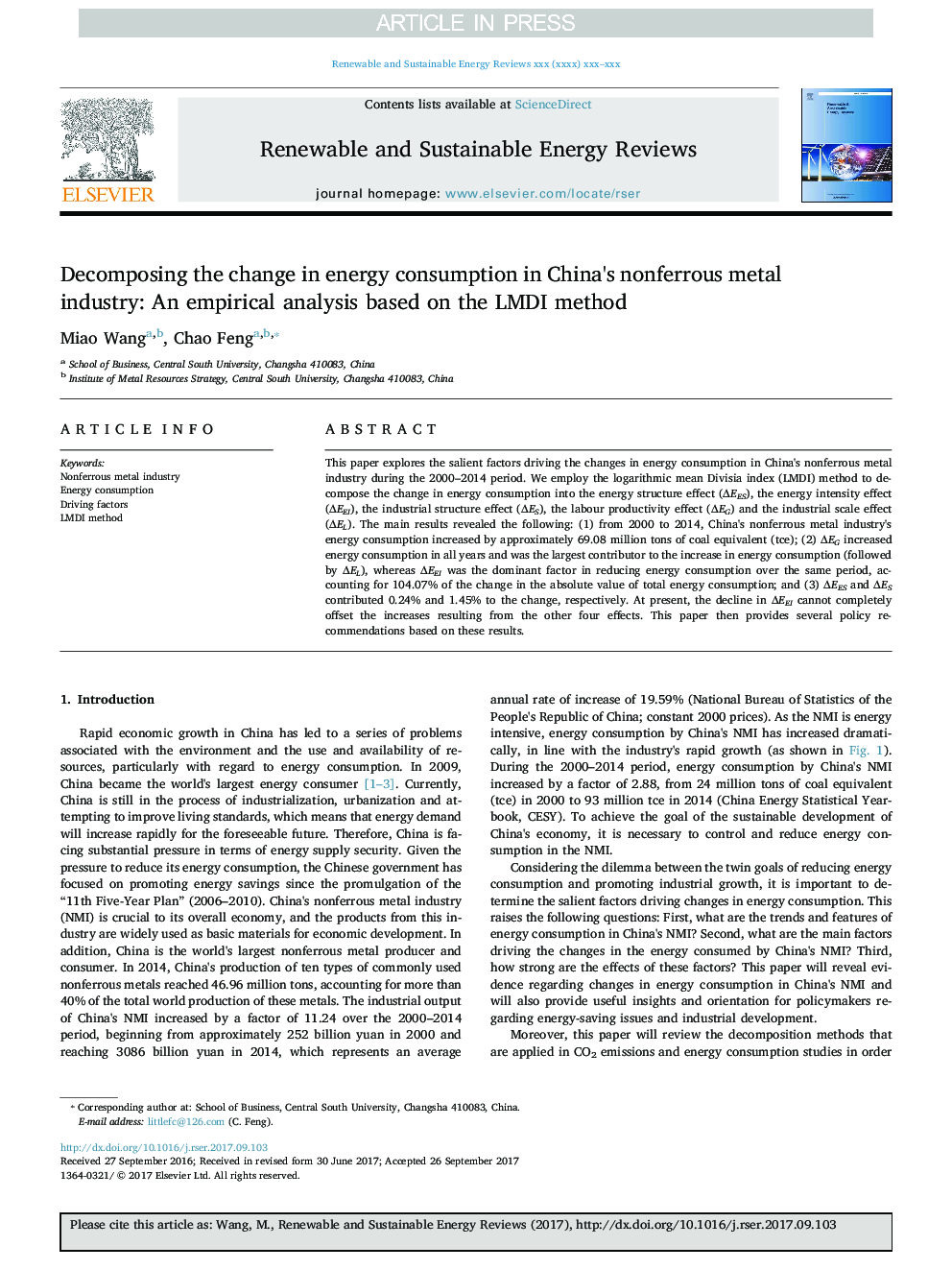| Article ID | Journal | Published Year | Pages | File Type |
|---|---|---|---|---|
| 8111891 | Renewable and Sustainable Energy Reviews | 2018 | 12 Pages |
Abstract
This paper explores the salient factors driving the changes in energy consumption in China's nonferrous metal industry during the 2000-2014 period. We employ the logarithmic mean Divisia index (LMDI) method to decompose the change in energy consumption into the energy structure effect (ÎEES), the energy intensity effect (ÎEEI), the industrial structure effect (ÎES), the labour productivity effect (ÎEG) and the industrial scale effect (ÎEL). The main results revealed the following: (1) from 2000 to 2014, China's nonferrous metal industry's energy consumption increased by approximately 69.08 million tons of coal equivalent (tce); (2) ÎEG increased energy consumption in all years and was the largest contributor to the increase in energy consumption (followed by ÎEL), whereas ÎEEI was the dominant factor in reducing energy consumption over the same period, accounting for 104.07% of the change in the absolute value of total energy consumption; and (3) ÎEES and ÎES contributed 0.24% and 1.45% to the change, respectively. At present, the decline in ÎEEI cannot completely offset the increases resulting from the other four effects. This paper then provides several policy recommendations based on these results.
Related Topics
Physical Sciences and Engineering
Energy
Renewable Energy, Sustainability and the Environment
Authors
Miao Wang, Chao Feng,
